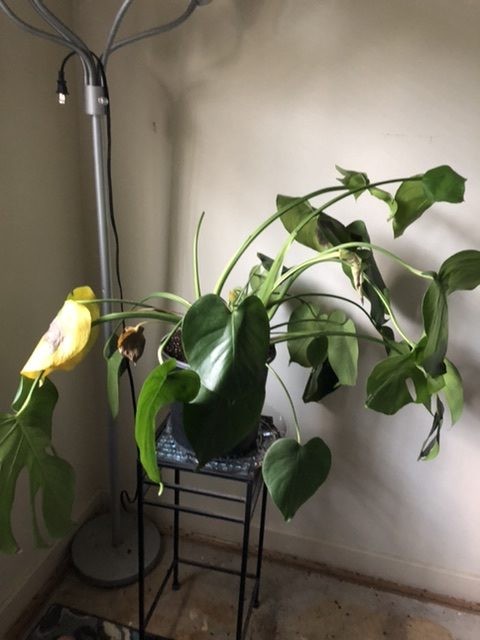A drooping Monstera deliciosa can be a concerning sight for any plant owner. This article will guide you through the common causes of a drooping Monstera and provide practical solutions to revive your plant. We’ll follow the journey of one plant owner who successfully nursed their droopy Monstera back to health with expert advice.
Common Causes of a Droopy Monstera
Monsteras, like all plants, have specific needs that must be met for them to thrive. When these needs aren’t met, drooping is a common symptom. Here are some of the most frequent culprits:
1. Overwatering or Poor Drainage
Overwatering is a leading cause of drooping Monstera plants. Soggy soil deprives the roots of oxygen, leading to root rot and ultimately, a droopy plant. Ensure your pot has adequate drainage holes and that the soil allows for proper water flow.
2. Underwaterwatering
While less common than overwatering, underwatering can also cause drooping. If the soil is completely dry and the leaves are wilting, your Monstera is thirsty.
3. Insufficient Light
Monsteras are native to tropical rainforests and thrive in bright, indirect light. Lack of sufficient light can weaken the plant and cause drooping.
4. Temperature Fluctuations
Extreme temperature changes or cold drafts can stress a Monstera, leading to drooping leaves.
5. Pests and Diseases
While less frequent, pests and diseases can also contribute to a droopy appearance. Inspect your plant regularly for signs of infestation or disease.
Reviving a Droopy Monstera: A Case Study
A plant owner noticed their Monstera drooping and displaying black spots on some leaves. Suspecting root rot from overwatering, they repotted the plant with fresh, well-draining soil. However, the drooping persisted.
An expert suggested thoroughly watering the soil, ensuring even moisture distribution throughout the pot. They also recommended moving the plant to a more central location in front of a north-facing window to maximize light exposure.
Within two weeks, the Monstera showed significant improvement, with the stems standing taller and no new yellowing or black spots. This highlights the importance of proper watering techniques and adequate light for a healthy Monstera.
Solutions and Prevention
- Watering: Water thoroughly when the top few inches of soil are dry. Ensure proper drainage to prevent root rot.
- Light: Place your Monstera in a location with bright, indirect light. Avoid direct sunlight, which can scorch the leaves.
- Temperature: Maintain a consistent temperature between 65-80°F (18-27°C) and avoid exposing your plant to drafts.
- Repotting: Repot your Monstera every 1-2 years with fresh, well-draining soil to provide adequate nutrients and drainage.
By understanding the common causes of drooping and implementing these solutions, you can help your Monstera thrive and maintain its vibrant beauty. If drooping persists despite these efforts, consider consulting with a plant specialist to rule out pests or diseases.

